New Zealand, 2008
Pages 1 | 2 | 3 | 4 | 5 | 6 | 7 | 8 | 9 | 10
11 | 12 | 13 | 14 | 15 | 16 | 17 | 18 | 19 | 20
Stewart Island
After two nights at the Irvings, we headed for Bluff and the ferry to
Stewart Island. The 30-kilometre bike ride to Bluff, the southernmost
port in New Zealand, was unremarkable, mainly flat and neither enjoyable
nor particularly awful along Route 1. Stewart Island is an hour by fast,
oceangoing catamaran southwest off the coast of New Zealand's South Island
— and probably the farthest south we will ever go. We arrived in
plenty of time for the 11:30 a.m. departure on Tuesday, January 29, and
made the crossing of Fouveaux Strait in relative comfort, as the sea was
calm. (This crossing is notorious for rough water and horrible seasickness!)
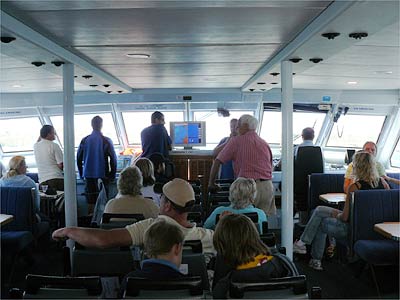 Aboard the fast catamaran to Stewart Island |
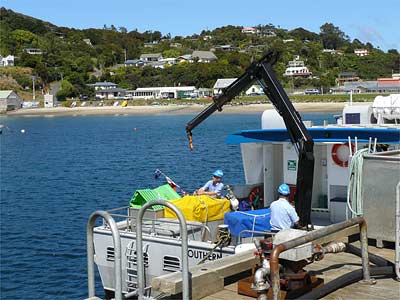 Unloading at Stewart Island |
Stewart Island lived up to all our expectations. When we arrived, Barbara
set a demanding schedule. In one afternoon we cycled most of the paved
roads on this island — and they are hilly — and took
a walk through native forest on Garden Mound to a spectacular lookout.
Barbara wanted to do as much as possible because the weather was still
sunny and perfect, and although we aim to stay another day or two, there
was no telling if it would be this perfect again.
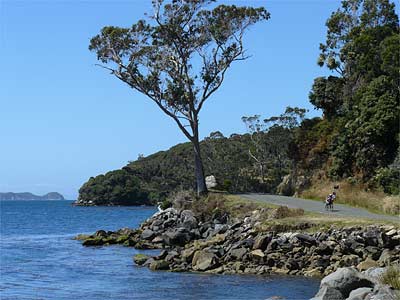 First ride along the shore |
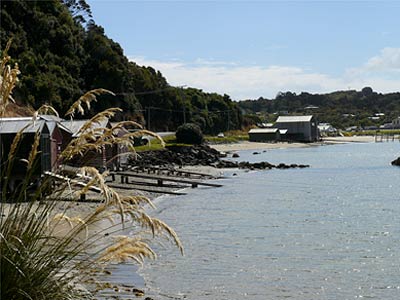 Looking back toward Oban, on Half Moon Bay |
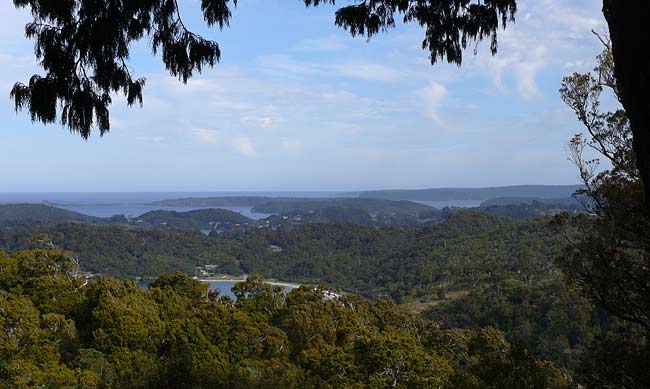
Stewart Island from the top of Garden Mound
On one of our short cycling trips on Stewart Island, we met Tom Hennessey,
an American transplant to Canada who now lives in BC half the year and
here on Stewart Island for Canada's winter months. His business is making
lightweight hammock tents, the most elegant and versatile design imaginable,
which are sold by REI and distributed around the world. Tom tempted us
both to try one, and we were mightily impressed. But we are still in our
nice tent, this time at Stewart Island Backpackers, a big place with lots
of people, decnt facilities, and level, grassy tent sites.
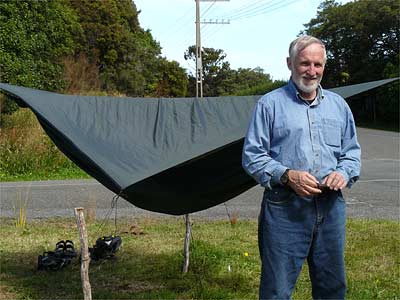 Tom Hennessey with his brilliant hammock-tent |
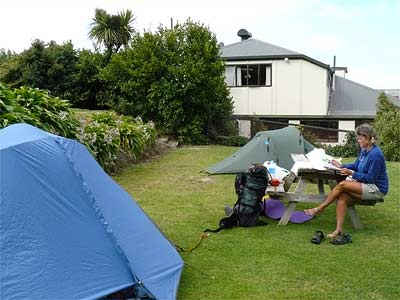 Camping at Stewart Island Backpackers |
Wednesday was our second day on Stewart Island. It rained during the
night and was overcast in the early morning but the afternoon turned out
to be just as beautiful as the day before. We repeated the same activities
but at a more leisurely pace: a bike ride and hike to Ackers Point lighthouse
(only a beacon really), which was wonderful, and a leisurely stroll down
two white sand, crescent beaches.
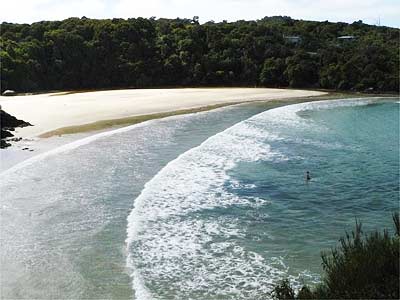 Bathing Beach on Stewart Island |
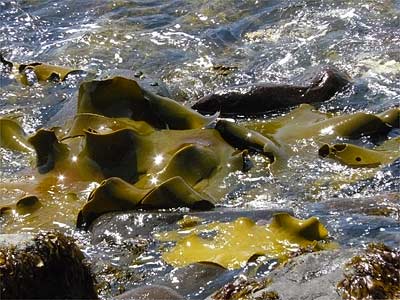 This kelp is huge — over a metre wide! |
| On our wandering, we found this old crank-style telephone on a tree, and there was even an ancient, rain-soaked telephone book still hanging below it. Barbara did not succeed in making a call. Below, a bicycle and a boat, one of which at least, like the telephone is no longer in use. |
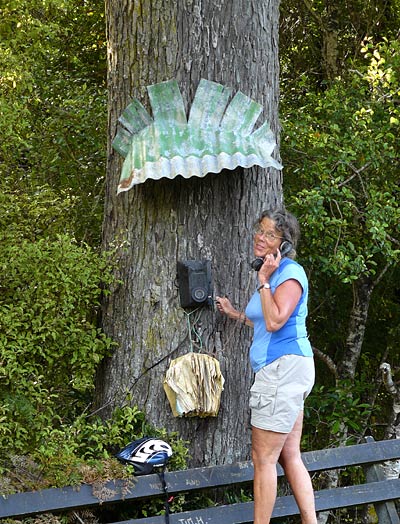 |
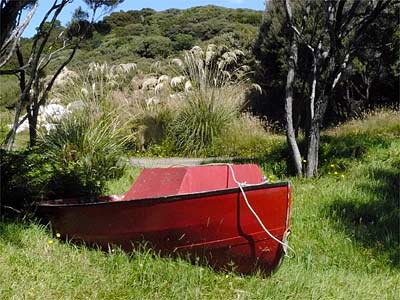 |
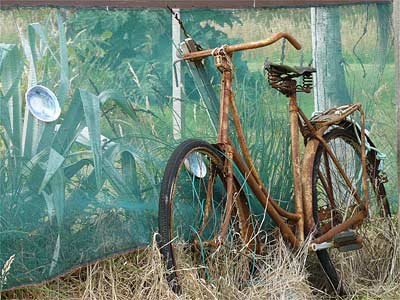 |
| After supper we took a short walk up a STEEP
road to Observatory Rock. The view was extraordinary, and luckily
enough, we arrived just as the sun was setting behind the distant
hills. We also had our first sighting of a Kaka, a large New Zealand
parrot related to the Kea, infamous for its pest curiosity and thievery. |
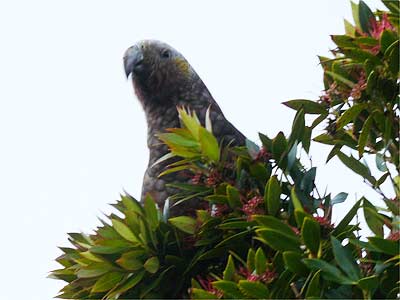 |
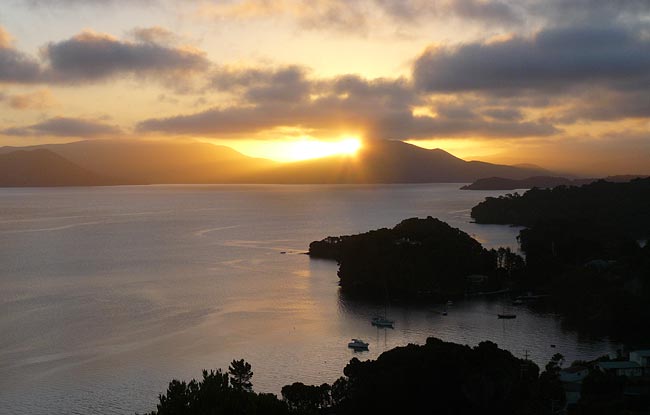
Sunset from Observatory Rock
| Thursday was our last day on Stewart Island, and if possible the weather was even more beautiful, once the morning clouds cleared away. We'd saved the best for last: a boat trip to Ulva Island, which is a protected sanctuary for birds and plants — though most assuredly not for rats, stoats, and other animals that might endanger the birds. |
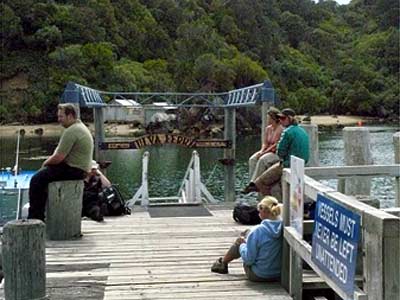 Waiting for the ferry to Ulva Island |
It was a stunning island, words fail, and its beauty was made accessible
by shady, perfecly groomed trails that meandered through the forests and
ferns and detoured to pristine beaches. We saw more birds than we could
photograph, nor can photos do justice to Stewart Island.
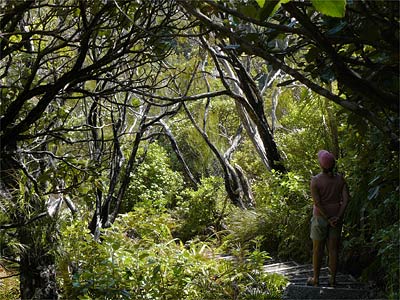 Trails through the native bush of Ulva Island |
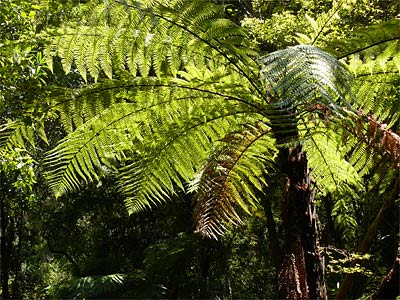 Tree ferns |
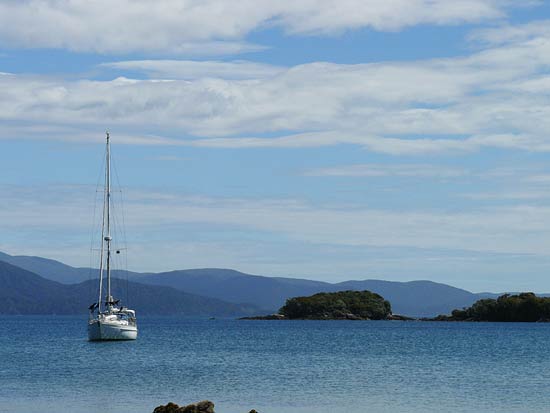
Yacht anchored off Ulva Island — what a destination!
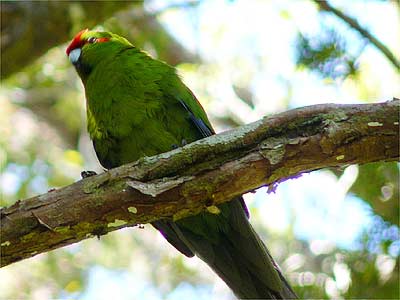 New Zealand parakeet |
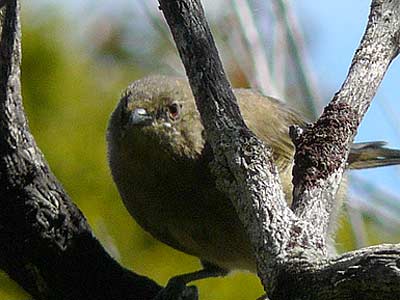 Bellbird |
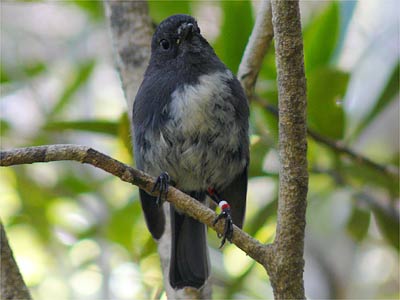 New Zealand Robin (not much like ours) |
 New Zealand Pigeon (the biggest one you've ever seen) |
| The bird on the right, a ,Weka must be inedible. These birds are oblivious to what is going on around them, and they would be so easy to catch that if they had any use, they would have gone extinct long ago! | 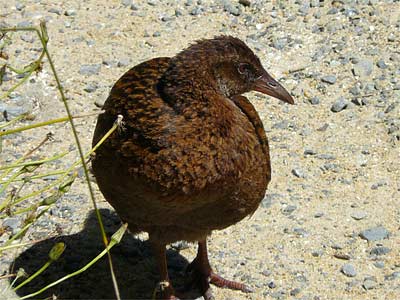 |
|
Our shelter from the rain — inside, much better than it looks |
<< Previous page Next page >> |